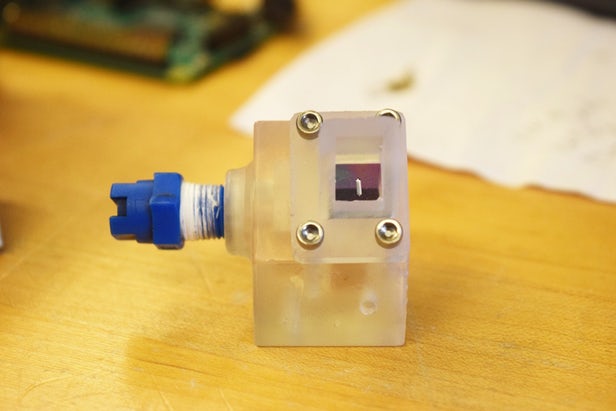
Breaking News
 James O'Keefe: My entire speech at AmericaFest 2025. We're not stopping. Join us to expose..
James O'Keefe: My entire speech at AmericaFest 2025. We're not stopping. Join us to expose..
 U.S. vs. Chinese Military Comparison – Focus on Asia-Taiwan Scenario
U.S. vs. Chinese Military Comparison – Focus on Asia-Taiwan Scenario
 DoJ Sues Four More States for Failing To Produce Voter-roll Data
DoJ Sues Four More States for Failing To Produce Voter-roll Data
 World's Largest Aviation Giant Abandons Google Over Security Concerns
World's Largest Aviation Giant Abandons Google Over Security Concerns
Top Tech News
 Perfect Aircrete, Kitchen Ingredients.
Perfect Aircrete, Kitchen Ingredients.
 Futuristic pixel-raising display lets you feel what's onscreen
Futuristic pixel-raising display lets you feel what's onscreen
 Cutting-Edge Facility Generates Pure Water and Hydrogen Fuel from Seawater for Mere Pennies
Cutting-Edge Facility Generates Pure Water and Hydrogen Fuel from Seawater for Mere Pennies
 This tiny dev board is packed with features for ambitious makers
This tiny dev board is packed with features for ambitious makers
 Scientists Discover Gel to Regrow Tooth Enamel
Scientists Discover Gel to Regrow Tooth Enamel
 Vitamin C and Dandelion Root Killing Cancer Cells -- as Former CDC Director Calls for COVID-19...
Vitamin C and Dandelion Root Killing Cancer Cells -- as Former CDC Director Calls for COVID-19...
 Galactic Brain: US firm plans space-based data centers, power grid to challenge China
Galactic Brain: US firm plans space-based data centers, power grid to challenge China
 A microbial cleanup for glyphosate just earned a patent. Here's why that matters
A microbial cleanup for glyphosate just earned a patent. Here's why that matters
 Japan Breaks Internet Speed Record with 5 Million Times Faster Data Transfer
Japan Breaks Internet Speed Record with 5 Million Times Faster Data Transfer
New propulsion system gets CubeSats moving with teaspoons of water

Now, to make CubeSats more maneuverable, a team from Purdue University has developed a system that would allow the mini satellites to safely propel themselves by spraying jets of ordinary water.
The Purdue prototype was a CubeSat measuring 10 cm3 (0.6 in3) and weighing 2.8 kg (6 lb), loaded with off-the-shelf electronic components normally used for Internet of Things devices. There's a computer that wirelessly receives instructions and relays them to an inertial measurement unit that works out how to act on them. But the star of the show was the propulsion system, dubbed a Film-Evaporation MEMS Tunable Array (FEMTA) thruster.
Four of these FEMTA thrusters were built into the prototype, each one carrying about a teaspoon of ultra-purified water. The tank is full of capillaries about 10 microns wide, which is too small for the water to flow out thanks to its surface tension. To control when it escapes, small heaters around the edges of these holes can be activated on demand, warming the water into vapor and creating tiny blasts that turn the craft.

 Advanced Propulsion Resources Part 1 of 2
Advanced Propulsion Resources Part 1 of 2

